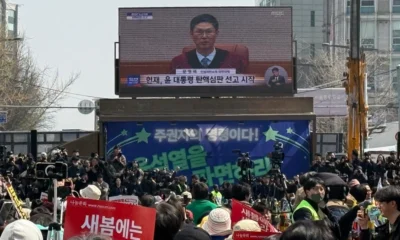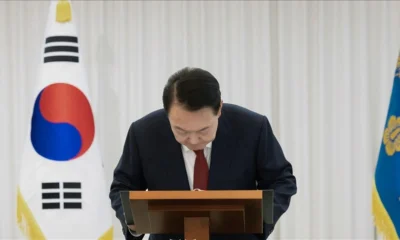Asia
Was it a free and fair general election in Pakistan

Free and Fair Election Network (FAFEN) had urged the Election Commission of Pakistan (ECP) to take notice of non-compliance by the Returning Officers with its instructions that reinforced categoric legal provisions requiring complete transparency at all stages of the election results process including the preparation of provisional and consolidated results in the constituencies. This non-compliance has overshadowed an otherwise largely controversy-free voting and counting processes at the polling stations.
Section 92 of the Elections Act, 2017 requires the Returning Officers to prepare and announce the Provisional Consolidated Statement of the Results of the Count (Form-47) in the presence of contesting candidates, their election agents, and authorized observers as may be present. Similarly, Section 95(1) requires the Returning Officer to conduct the consolidation of the results in the presence of the contesting candidates and their election agents. Section 95(9) requires the Returning Officers to provide copies of Form-48 (Consolidated Statement of the Results of the Count Furnished by the Presiding Officers) and Form-49 (Final Consolidated Result). Section 238 also allows the accredited observers to observe the consolidation of results.
However, the Returning Officers (ROs) in 135 of 260 National Assembly constituencies did not adhere to these provisions, undermining the ECP’s efforts to maximize electoral transparency, which was generally maintained during the voting and counting processes at the polling stations. The Returning Officers did not allow FAFEN observers in 135 constituencies to observe the tabulation process –– 80 in Punjab, 23 in Sindh, 18 in Khyber Pakhtunkhwa, 11 in Balochistan and all three in Islamabad Capital Territory (ICT).
Political parties failed to get major votes
Of these 135 constituencies, Pakistan Tehreek-e-Insaf (PTI)-backed independents won 46, Pakistan Muslim League Nawaz (PMLN) 43, Pakistan Peoples Party Parliamentarians (PPPP) 28, unaffiliated independents five, Jamiat Ulema-e-Islam Pakistan (JUI-P) three, two each by Muttahida Qaumi Movement (MQM) and Pakistan Muslim League (PML) and one each by Istehkam-e-Pakistan Party (IPP), Balochistan National Party (BNP), Pakhtunkhwa Milli Awami Party (PkMAP), Balochistan Awami Party (BAP) and Majlis-e-Wahdat Muslimeen (MWM). The provisional result of one such constituency is yet to be announced.
As per FAFEN observers, the Returning Officers in 65 constituencies prohibited one or more candidates and/or their election agents from participating in the tabulation proceedings. Of these 65 constituencies, 25 are won by PMLN, 24 by PTI-backed independents, five by PPPP, four by unaffiliated independents, three by PML, and one each by IPP, BNP and PkMAP. One such constituency remains undecided.
While Section 92 requires the preparation of provisional results in presence of contesting candidates, their election agents and authorized observers, FAFEN observers reported that the Returning Officers in 80 out of 125 National Assembly constituencies where they were allowed by the Returning Officers to observe the tabulation proceedings — 43 in Punjab, 20 in Sindh, 13 in KP and four in Balochistan— were opening the tamper evident bags containing the Form-45 (Results of the Count) and Form-46 (Ballot Paper Account) brought by Presiding Officers in their presence. In 42 constituencies – 17 in Punjab, 13 in Sindh, 11 in KP and one in Balochistan – these bags were opened without any candidates and/or their election agents present. In the remaining three constituencies – two in Sindh and one in KP— the observers could not determine whether or not these bags were being opened in the presence of candidates and election agents.
A need for a fair and independent investigation on vote-rigging accusations
As per Rule 84(3) of the Election Rules, 2017, the Returning Officers are required to point out any arithmetic errors in Form-45 to the Presiding Officers and ask them to correct the errors with their signatures before resending electronically a copy of corrected Form-45 to the Commission. FAFEN observers reported that in 53 National Assembly constituencies — 23 in Punjab, 18 in Sindh, 10 in KP and two in Balochistan— the Returning Officers pointed out arithmetic errors in one or more Form-45 and asked the concerned Presiding Officers to correct the errors with initials and re-send the electronic copies of the corrected forms.
The Returning Officers in most constituencies did not make adequate arrangements for the hundreds of Presiding Officers who arrived at their offices to hand over the election results and materials. Long queues of vehicles carrying officials and election materials in the winter nights without any seating and food arrangements was the leading reason for chaotic and crowded environment at the tabulation centers in 66 constituencies including 26 in Punjab, 25 in Sindh, 12 in KP and three in Baluchistan as reported by FAFEN observers. It takes roughly 15-30 minutes for each Presiding Officer to hand over election results and other election materials. Also, the disorderly proceedings at the tabulation centers may be due to same legal deadline of 2 a.m. for delivering polling stations’ results to the Returning Officers both electronically and physically. While this may be a feasible deadline in case results are transmitted electronically, the physical handing over of polling station results and materials remains a logistical challenge especially in a country where many constituencies are geographically large such as the ones in Chitral, Kohistan, south Punjab, most parts of Balochistan and rural Sindh. FAFEN observers reported that Returning Officers were able to prepare partially-completed provisional results by legally-stipulated time of 2:00 a.m. in only four constituencies. The complete provisional result has to be prepared by 10:00 a.m. the day following the polling day.
While the parliament may need to reform the Elections Act, 2017 in light of the operational realities as well as plug the persisting loopholes in the election result management process, the ECP must probe the non-compliance of Returning Officers of its instructions to ensure electoral transparency and to determine responsibility as per Section 55 of the Elections Act, 2017, which empower the Election Commission to take action against erring election officials, public servants and persons in the service of Pakistan.
Asia
Chinese consumer spending rebounds during May Day break

During the five-day May Day holiday, Chinese spending increased by 8% year-on-year, reaching 180.27 billion yuan (approximately $25 billion), indicating that consumer activity remains vibrant.
An estimated 314 million domestic trips were made, marking a 6.4% increase compared to the previous year.
The May Day holiday, one of the country’s longest breaks, is closely watched as a barometer of Chinese consumer confidence.
China’s Ministry of Culture and Tourism recorded 314 million domestic trips during the holiday, a 6.5% increase, while the number of transactions using Weixin Pay, a popular payment app, rose by more than 10% year-on-year, with a notable surge in restaurant spending.
According to Reuters’ calculations based on official data, total spending per person during the five-day May holiday period, typically a busy time for family travel, increased by 1.5% to 574.1 yuan.
This figure remained below pre-pandemic levels, when spending per person was 603.4 yuan.
Consumption in the world’s second-largest economy has been hurt by a post-pandemic slowdown and a prolonged property crisis, with the effects of the US-China trade war expected to deepen these challenges.
Meanwhile, China’s services sector saw a slowdown in new order growth compared to March, according to a private sector survey released on Tuesday, due to uncertainty caused by US tariffs.
Despite stronger-than-expected economic growth in the first quarter, supported by government stimulus, the Chinese economy continues to face persistent deflationary risks.
The Caixin/S&P Global services purchasing managers’ index (PMI) fell to 50.7 from 51.9 in March, marking its lowest reading since September.
This aligns largely with the official survey, which showed services activity in China easing to 50.1 from 50.3 the previous month.
The Caixin services survey indicated that new business growth slowed to its weakest level since December 2022, although export orders saw some increase, partly linked to the recovery in tourism.
Zichun Huang, China economist at Capital Economics, said the drop in the Caixin PMI “provides further evidence that the trade war is weighing on economic activity in China, even beyond the manufacturing sector.”
Huang added, “While some caution is clearly warranted, we suspect firms are overstating how much damage US tariffs will do.”
Around 48% of China’s workforce was employed in the services sector in 2023, and the sector contributed 56.7% to total GDP last year. However, US President Donald Trump’s trade actions could hit the manufacturing sector and damage businesses’ hiring plans and consumer confidence.
Business sentiment in the services sector grew at its slowest pace since February 2020, with companies citing US tariffs as a major concern.
Service providers cut jobs for a second consecutive month to reduce costs, leading to an increase in backlogs of work and pushing the relevant indicator into expansionary territory for the first time this year.
Firms also lowered prices to attract customers despite high input costs.
Asia
Third countries sound alarm over Chinese tariff evasion tactics
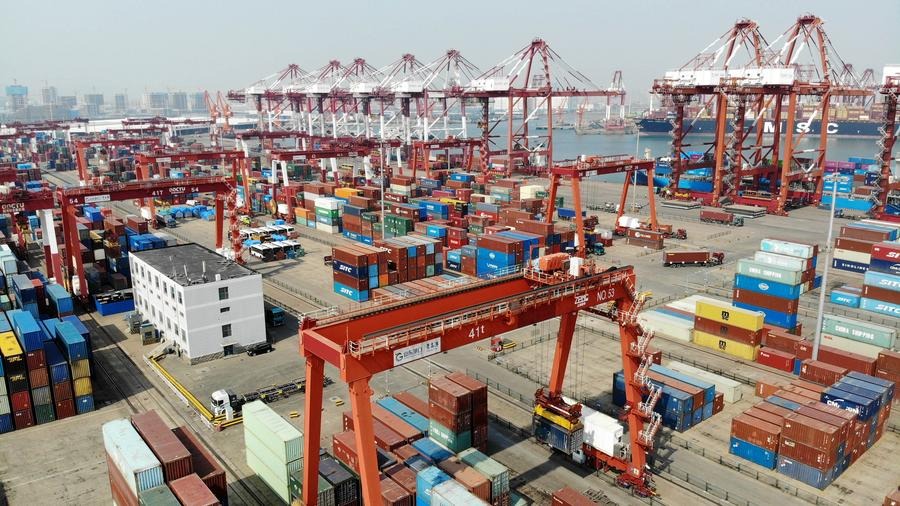
Chinese exporters are increasing their efforts to conceal the true origin of their goods by shipping them through third countries to avoid tariffs imposed by US President Donald Trump.
According to a report by the Financial Times (FT), the influx of goods from China has sounded alarm bells in neighboring countries, which are reluctant to become transshipment points for trade directed at the US.
The increasing prevalence of this tactic highlights concerns that new tariffs of up to 145% imposed by Trump on Chinese goods will impede exporters’ access to one of their most important markets.
Sarah Ou, a salesperson at Baitai Lighting, an exporter based in the southern Chinese city of Zhongshan, told the FT, “The tariff is very high,” adding, “But we can sell the goods to neighboring countries, and the neighboring countries can sell them to the US, and thus the tariffs are reduced.”
US trade laws require goods to undergo a “substantial transformation” in a country, typically including processing or manufacturing that adds significant value, to be considered the country of origin for tariff purposes.
However, advertisements on Chinese social media platforms like Xiaohongshu offer exporters the option of sending their goods to countries like Malaysia, obtaining new certificates of origin there, and then shipping them to the US.
An advertisement posted this week on Xiaohongshu by an account called ‘Ruby — Third Country Transshipment’ read, “Did the US impose tariffs on Chinese products? Transit through Malaysia and ‘transform’ them into Southeast Asian goods!”
It added, “Did the US impose restrictions on Chinese-origin wood flooring and tableware? ‘Wash the origin’ in Malaysia and pass customs smoothly!”
South Korea’s customs service announced last month that it had found 29.5 billion won ($21 million) worth of foreign products with falsified countries of origin in the first quarter of this year, most of which came from China and were almost entirely destined for the US.
The agency said in a statement, “Due to changes in the US government’s trade policy, we are seeing a sharp increase recently in cases where our country is being used as a transit point for products to avoid different tariffs and restrictions.”
Vietnam’s Ministry of Industry and Trade last month called on local trade associations, exporters, and manufacturers to strengthen origin controls for raw materials and input goods and prevent the issuance of fraudulent certificates.
Thailand’s Department of Foreign Trade also announced measures last month to tighten origin controls on products shipped to the US to prevent tariff evasion.
Ou from Baitai said that, like many Chinese manufacturers, the company ships goods “free on board” (FOB), meaning responsibility passes to the buyer once the goods leave the port of departure, thus reducing the exporter’s legal risk.
She said, “Customers just have to find a port in Guangzhou or Shenzhen, and as long as the goods reach there, we have completed our task. After that it is not our business.”
Salespeople from two logistics companies said they could ship goods to Malaysia’s Port Klang, where they would transfer the goods to local containers and change their labels and packaging. The salespeople, who asked not to be named, told the FT that the companies had connections with factories in Malaysia that could help issue certificates of origin.
Malaysia’s Ministry of Investment, Trade and Industry stated that the country is “committed to upholding the integrity of international trade practices” and “views any attempt to circumvent tariffs through false or fraudulent declarations, whether related to the value or origin of goods, as a serious offense.”
It added, “If the veracity of these reports is established, we will initiate investigations in cooperation with the customs department and US authorities and take necessary measures.”
China’s foreign and commerce ministries did not respond to the Financial Times‘ requests for comment regarding Chinese exporters.
Asia
India and Pakistan boost military capacity amid rising tensions
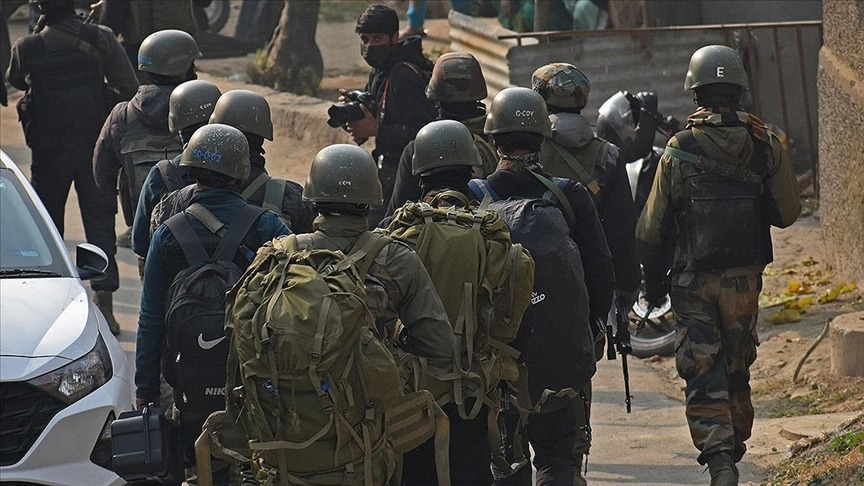
Former military officials and experts state that nuclear-armed neighbors India and Pakistan have significantly increased their military capabilities following the 2019 clashes, a situation that raises the risk of escalation even in a limited conflict. Tensions are rising between the Indian and Pakistani armies.
Pakistan claims India is planning military intervention after New Delhi blamed Islamabad for a deadly attack on local tourists in the Kashmir region last month. Indian Prime Minister Narendra Modi said he would punish those who supported the attack in a way they “cannot imagine.”
Pakistan denies involvement in the attack but warns it will retaliate if targeted.
In 2019, India conducted airstrikes inside Pakistan after a bombing of an Indian military convoy in Kashmir, stating it had destroyed “terrorist camps.” Pakistani jets conducted retaliatory airstrikes in operations lasting two days and shot down an Indian aircraft. Now, retaliations are occurring intermittently between the Indian and Pakistani armies.
The neighboring countries have fought three wars in 1948, 1965, and 1971, and have clashed countless times since gaining independence, mostly over the Kashmir region, which both claim. Both countries acquired nuclear weapons in the 1990s, and Kashmir is considered one of the world’s most dangerous conflict zones. The Indian and Pakistani armies have since increased their capabilities against potential conflicts.
Military experts state that neither side would consider using nuclear weapons unless cornered, but the risk of escalation is high even in a limited conflict.
Experts speaking to Reuters stated that in such a conflict, it is likely that aircraft, missiles, or drones, which are considered to be of equal strength between India and Pakistan, would be used.
Frank O’Donnell, a visiting fellow in the South Asia Program at the Stimson Center think tank in Washington, said, “Decision-makers in both countries are more willing to take risks in initiating and escalating conflict than they were before 2019.”
“However, without a clear mutual understanding of precise actions, this could inadvertently lead to escalation,” he added.
Both sides have acquired new conventional strike options by purchasing new military equipment since 2019.
Muhammad Faisal, a South Asia security researcher at the University of Technology Sydney, said, “Both sides will think they are in a better position than last time. But we will only know this when we see a real conflict.”
India, in particular, felt it was at a disadvantage in 2019 because it had to rely on aging Russian jets. Since then, it has purchased 36 French-made Rafale fighter jets, considered one of the best Western aircraft, and has ordered more for its navy.
In contrast, Pakistan began purchasing batches of China’s J-10, one of its most advanced fighter jets and considered equivalent to the Rafale, starting in 2022. According to the London-based International Institute for Strategic Studies, Pakistan has at least 20 of these aircraft.
The aircraft have advanced capabilities similar to the Rafale, which is equipped with Meteor air-to-air missiles that operate beyond visual range. A Pakistani security official, who requested anonymity because they were not authorized to speak to the media, said the J-10 is also equipped with similar PL-15 missiles.
To fill gaps in air defense that emerged during the 2019 conflict, India purchased Russia’s battle-tested S-400 mobile anti-aircraft missile system. Pakistan, on the other hand, acquired the HQ-9 from China, which is a lower-tier system based on Russia’s S-300 system.
Anil Golani, a former air marshal in the Indian Air Force and director general of the Center for Air Power Studies think tank in Delhi, said, “In some ways, we are definitely in a better position (than in 2019).”
Speaking to Reuters, Golani added, “The call for action in the country is very high, but in my personal assessment, neither India nor Pakistan wants an all-out conflict.”
On the other hand, the US and China factors are also being discussed. China is India’s rival and Pakistan’s close ally and largest military equipment supplier. The US, meanwhile, has strong relations with India.
Muhammad Faisal from the University of Technology Sydney said, “This could be a competition between Western and Chinese technology,” adding, “For India, there is a dilemma regarding how many air squadrons to allocate to the Pakistan front, as it also needs to defend against China.”
China and India fought a brief border war in 1962, and the two armies clashed most recently in 2022 on the tense Himalayan border.
Pakistan has a fleet of F-16 aircraft purchased during periods when its relations with Washington were stronger. These F-16s were used in the 2019 conflict, leading India to issue a protest note to the US, although New Delhi currently has much closer relations with Washington.
Experts said that this time, to avoid a political tension with F-16s and to leverage the advantage of having more advanced aircraft, Pakistan would likely lead with its Chinese-made J-10s.
However, a drone or ground-launched missile attack is considered more likely because there is no risk of the pilot being shot down.
India has turned to Israel for combat-capable drones and purchased the Heron Mark 2. It has also ordered Predator drones from the US. According to the Pakistani security official, Pakistan has purchased Turkey’s Bayraktar TB2, which Ukraine used in its war with Russia, and also the Akıncı UAV from Turkey.
Amidst the ongoing tension, Pakistan conducted a test of a surface-to-surface ballistic missile with a range of 450 km (280 miles) on Saturday. A statement from the country’s army said the test was conducted to demonstrate the armed forces’ readiness to “protect national security against any aggression.” Pakistan also has short and medium-range missiles that can be fired from land, sea, and air.
India has not yet commented on the test. India’s capabilities include the BrahMos supersonic cruise missile with a range of approximately 300 km and the Agni series of intercontinental ballistic missiles.
The 2019 conflict nearly spiraled out of control with numerous missile strike threats.
Kaiser Tufail, a former fighter pilot in the Pakistan Air Force, said India failed to achieve deterrence in 2019, so this time it would aim for a sharper attack, which would bring more risk.
Modi implied after the 2019 clashes that they felt the lack of the Rafale fighter jets ordered at the time and that the outcome of the conflict might have been different if they had the French fighter jets.
“If you go beyond what we saw in 2019, that becomes very risky,” Tufail said, adding, “It is extremely dangerous for nuclear-armed countries to clash with each other.”
-
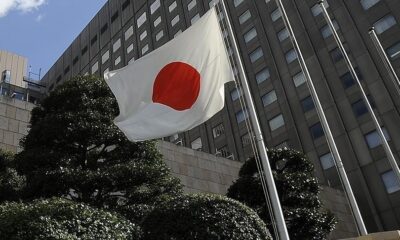
 Asia2 weeks ago
Asia2 weeks agoJapanese investors sell $20 billion in bonds amid tariff turmoil
-

 Middle East2 weeks ago
Middle East2 weeks agoSeven-year Gaza ceasefire proposal emerges
-

 America2 weeks ago
America2 weeks agoOpenAI eyes Google’s Chrome browser amid antitrust trial
-
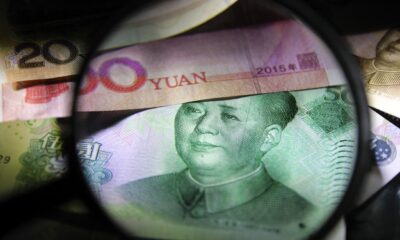
 Asia2 weeks ago
Asia2 weeks agoNew Russia-China payment network cuts trade costs
-

 America2 weeks ago
America2 weeks agoThree prosecutors resign in New York Mayor Adams case
-
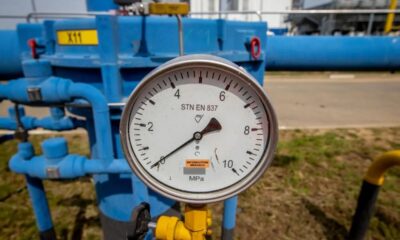
 Diplomacy2 weeks ago
Diplomacy2 weeks agoRussia offers deeper gas discount to China
-

 Opinion7 days ago
Opinion7 days agoThe UAE’s Bold Leap into the Global LLM Race
-

 Diplomacy2 weeks ago
Diplomacy2 weeks agoRevisiting the Bandung spirit in a multipolar world




